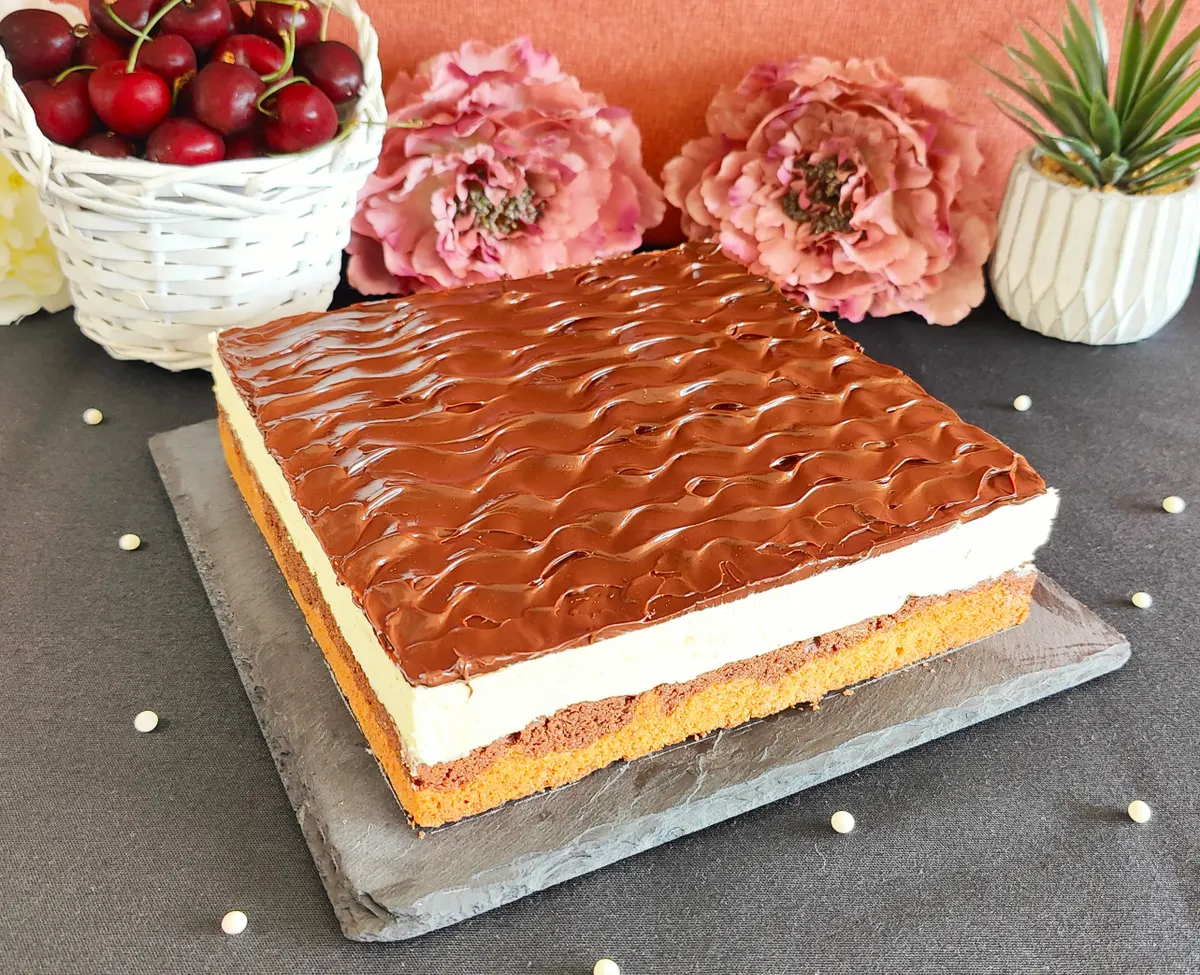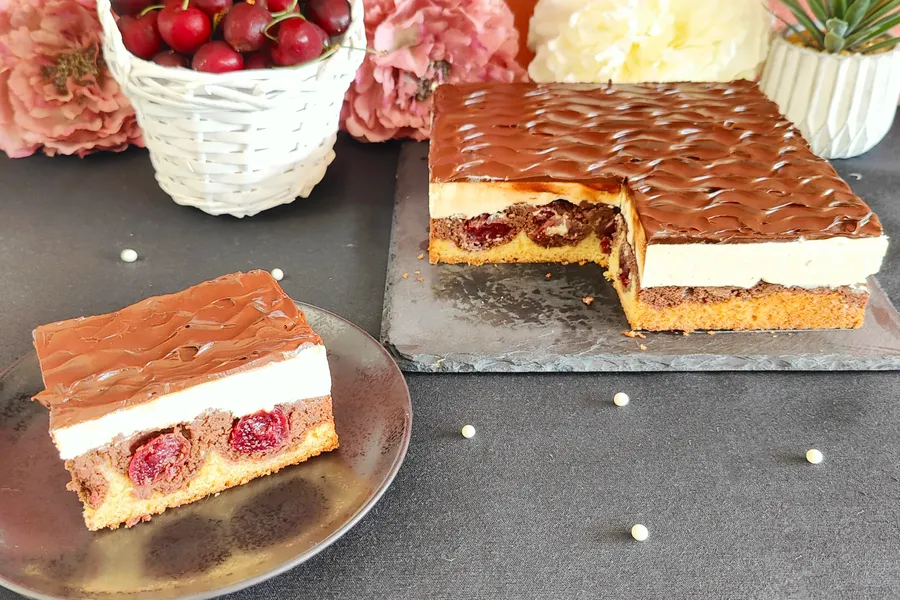
The history of Danube Wave Cake
The Danube Wave Cake, known in German as Donauwelle, is a classic of Germanic baking with origins dating back to the 20th century in regions of southern Germany and Austria. Its name refers to the Danube River (Donau in German), the second longest in Europe, although interestingly, there is no evidence that the recipe originates from a riverside town. The reference to 'waves' is not geographical, but rather comes from the rippling effect created by the cherries as they sink between layers of light and dark sponge during baking.
The earliest known mention of this cake appears in German cookbooks from the mid-20th century, though it gained widespread popularity in the 1960s, when it began to be sold as a ready-to-bake product in West Germany. Companies such as Dr. Oetker included versions of Donauwelle in their recipe collections and cake mix boxes, helping to establish it as a beloved family dessert across the region.
The composition of the cake reflects the typical German-Austrian pastry style: a marbled sponge base (a mix of vanilla and cocoa), sour cherries (traditionally Schattenmorellen), a generous layer of buttercream (made with vanilla pudding), and a dark chocolate glaze. This combination of flavours and textures creates a striking visual contrast and a balanced flavour profile between sweetness and tartness.
Although some attribute its creation to Austrian pastry chefs from the Upper Austria region—where cherry and buttercream cakes are also traditional—there is no official documentation confirming a specific inventor. The most widely accepted hypothesis among food historians is that it is an anonymous recipe, likely developed by local bakers and later popularised by the food industry.
In Germany, Donauwelle is commonly served at family gatherings, birthdays and school celebrations. It is considered a 'Blechkuchen' (tray bake), making it ideal for serving in large portions. Today, it can be found both in traditional bakeries and in industrial versions in supermarkets throughout Germany, Austria and Switzerland, proving its strong presence in Central European food culture.
Finally, it is worth noting that the Danube Wave Cake has not remained static over time. Many modern variations include ingredients such as cherry liqueur, raspberries instead of cherries, or even gluten-free or vegan versions. Even so, the original recipe remains a symbol of Central European patisserie, combining history, visual appeal and flavour in a single cake.

 albertoimizcoz
albertoimizcoz

